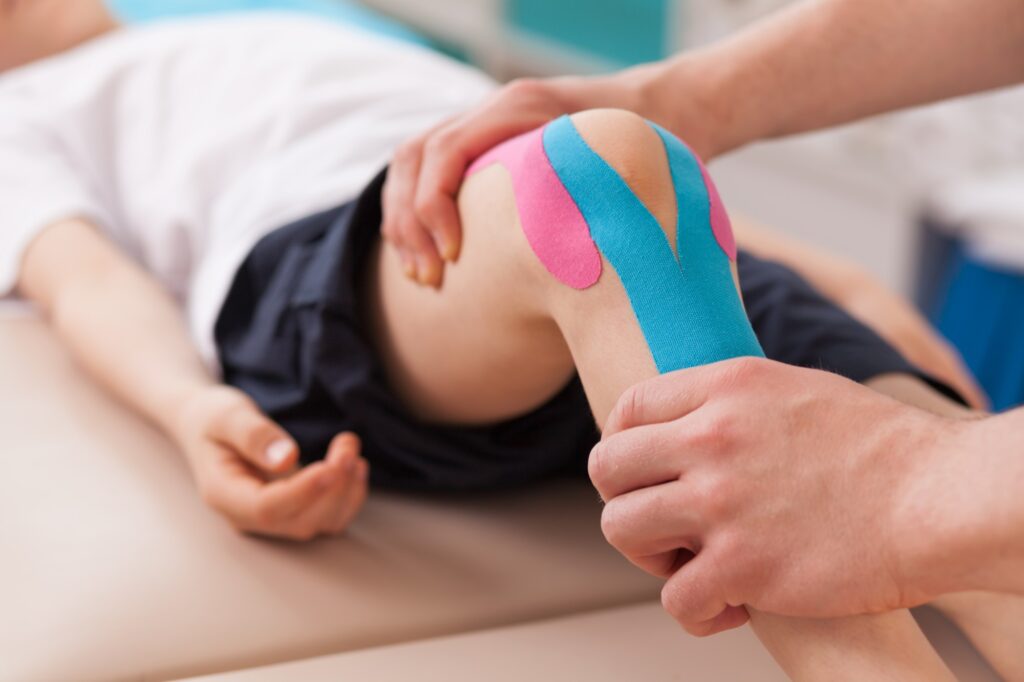
Medical Grade Braces – Worldwide FREE shipping
If your child’s joints are more flexible than average, they have joint hypermobility. This is referred to as being ‘double-jointed’ in some areas.
Joint hypermobility is characterized by increased stretchiness of the connective tissue that links the joints. The majority of youngsters with hypermobile joints do not require assistance with daily activities.
More on Hypermobility in Children
When compared to older individuals, most children’s joints are incredibly flexible; yet, as children get older, their joints become less flexible. Hypermobility is defined as a greater range of movement in several joints than is normal for the person’s age. It is particularly frequent in youngsters, with 28 to 50 percent of individuals younger than ten years of age having been documented to have the condition. It is less likely that you will develop hypermobility as you grow older. It affects between 8 and 11% of school-age children in the United Kingdom. Hypermobility is a condition that commonly runs in families. Most young individuals are unaware that they are hypermobile; hypermobility cannot be acquired; it is simply how you are built. It has a greater impact on females than on boys.
Joint Hypermobility is a word that may be used to describe a broad spectrum of youngsters who have flexible joints. On the other hand, children with hypermobility may profit from their loose joints, which are located at one extreme of the spectrum. They may be able to make use of their hypermobility to achieve success in sports such as gymnastics, dancing, swimming, and athletics, among others. The majority of youngsters with hypermobile joints do not require assistance with daily activities. On the opposite end of the spectrum are those who suffer from discomfort and may undergo dislocations of their joints.
Symptoms
It’s possible that your child is not experiencing any symptoms. Some children, on the other hand, have the following symptoms:
- Symptoms of joint and muscle pain, particularly in the leg muscles, are generally alleviated by rest.
- Low muscle tone and weakening in the muscles can impact both fine and gross motor abilities.
- Having flat feet increases the likelihood of sprains in the afflicted joints.
- Cramping or deep agonizing sensations that are become more severe at night. These cramps react nicely to light massage and heat treatment.
Hypermobility in toddlers/babies
Babies with hypermobility have the following symptoms:
- May never crawl
- Sometimes seem floppy or weak
- Might hate playtime
- May have been late in learning how to sit
- May bum shuffle
- May have a high rounded back or “W” sit
Infants that are hypermobile frequently begin walking a few months later than the average age. This might happen as late as 19 to 20 months after the birth. Once they are up on their feet and walking, they should wear supportive footwear.
If you suspect that your newborn or toddler is hypermobile and is not meeting developmental milestones, consult with your public health nurse or therapist for advice.
When should you seek assistance?
A general practitioner, an occupational therapist, or a physiotherapist can assist you if your kid is:
- Suffering from frequent or severe discomfort
- Having difficulty with tasks of everyday living such as writing by hand
- Having difficulty meeting their gross motor milestones, such as walking or leaping
What Is the Treatment for Hypermobility?
Treatment for hypermobility is tailored to your child’s specific needs, taking into consideration the severity of his or her symptoms and the influence on his or her everyday activities. If your child’s symptoms are minor and few, he or she may not require any therapy. Some of the elements that might aid with symptoms are as follows:
- Physiotherapy
The physiotherapy intervention may include one or more of the following components:
- Patient education about hypermobility and handling strategies/tips is provided at the outset. Patients will be guided to appropriate resources and referred to other professionals as needed.
- Using Hands-On Therapy
- Home exercises to do on good and bad days to enhance cardiovascular fitness, stamina, joint stability, proprioception/balance, and mobility are beneficial for everyone.
- Creating a baseline activity level and defining realistic short- and long-term objectives are essential.
- Individualized treatment or referral to our in-house corporate Pilates program may be tailored to the needs of persons with hypermobility.
- Exercises should be monitored, educated, and progressed as tolerated continuously. Flares should be dealt with as soon as feasible.
Taping improves posture, protects joints, and facilitates mobility. - Decisions on follow-up appointments, as well as the frequency of these appointments, should be made together.
Communicate with the other healthcare providers that are engaged.
Medication
It is critical to notice that none of the joints involved are inflamed in this situation. Your doctor/physiotherapist may recommend that you use over-the-counter drugs such as acetaminophen (Tylenol), ibuprofen (Advil), or naproxen (Aleve) to relieve the symptoms of your discomfort (Aleve). These can be used for short-term pain treatment before and after exercise or preventative measures. Because children with hypermobility frequently experience discomfort at night, your doctor may recommend that you give your kid medicine with a snack in the evening.
Other Treatments
Pain can be overpowering at times, and some facilities provide pain management treatments to aid with discomfort and chronic pain. Aside from hypermobility syndrome, the discomfort might also be caused by pain amplification syndrome or fibromyalgia, which are both quite frequent in youngsters. Inquire with your doctor for further information about pain remedies and medical issues that are related to pain.
Living with Hypermobility
In order to maintain an active lifestyle, it is recommended that you engage in regular activities that support and stabilize your joints. Pain tolerance may be determined by you and your kid, as well as by how you adjust your lifestyle in response to this decision. A well-balanced diet, as well as the maintenance of a healthy weight, are also suggested.









